Research Topics
Topic 1: Efficient capture and separation of small molecules.
Molecules that are gases at room temperature and atmospheric pressure have weak intermolecular interactions and similar sizes, making it difficult to separate them when mixed. The nanospaces in MOFs can be designed to recognize and capture specific molecules with modulating their size, structure, and surface properties. We have successfully developed MOFs that can separate small molecules like acetylene, carbon monoxide, and oxygen with an ultra-high selectivity that is impossible with other nanospace materials.
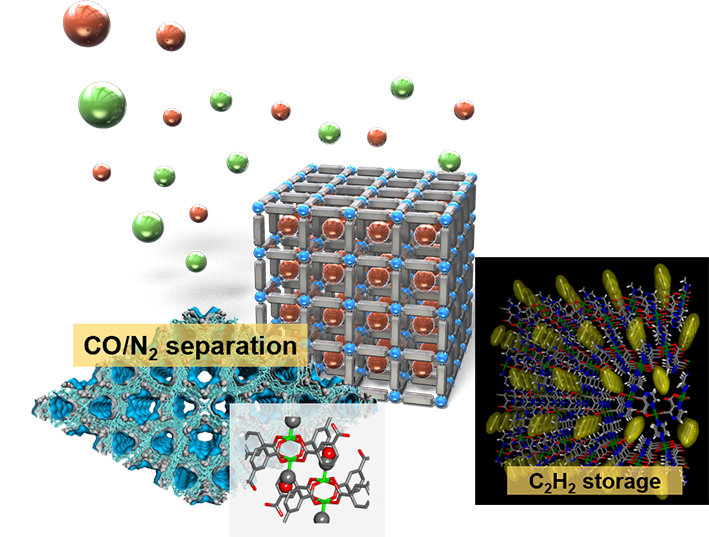
Topic 2: Exploring a unique reaction field using nanospace.
The orientation and arrangement of molecules trapped in nanospaces are highly restricted. Therefore, reactivity within nanospaces differs from those in conventional liquid or gas phases. We design the nanospace based on MOF architecture, enabling reactions that are unimaginable by conventional standards. Furthermore, electronically active species, such as radicals, can be significantly stabilized by isolating them within the nanospaces of MOFs, allowing for the development of new reactions.
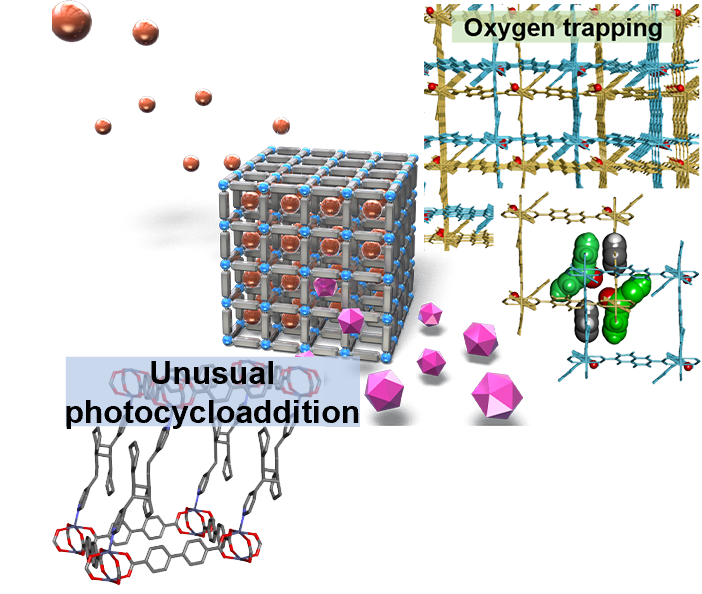
Topic 3: Development of porous molecular conductors responsive to trapped molecules.
Molecular conductors formed by stacked π-conjugated planar molecules exhibit interesting stimuli-responsive properties based on low-dimensional electron systems, such as metal-to-insulator transition. We have developed a porous molecular conductor as a new type of electron conductive MOF that combines the functions of a “conductive π-stacked framework,” “nanospaces,” and “metal ions”. Furthermore, we are developing molecule-responsive electronic materials that surpass conventional materials, such as energy-saving sensors and electrode catalysts.
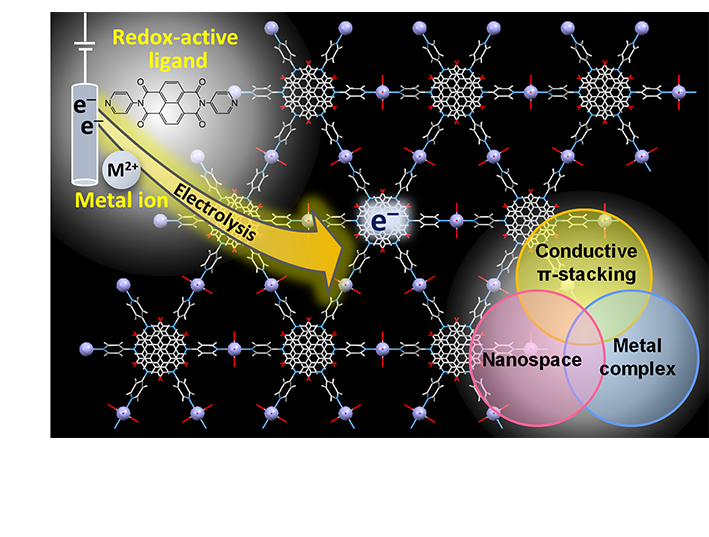
Topic 4: Elucidating the function of nanospace with in situ measurements.
To elucidate the principles and mechanisms of functions such as molecular trapping in nanospaces, multifaceted analyses are necessary. We have developed original systems that allow for simultaneous in situ X-ray diffraction, spectroscopic measurements, and adsorption measurements, which are unique in the world. Additionally, we are conducting advanced measurements using synchrotron radiation facilities, and our research is deepening the fundamental understanding of the functions and phenomena in nanospaces.
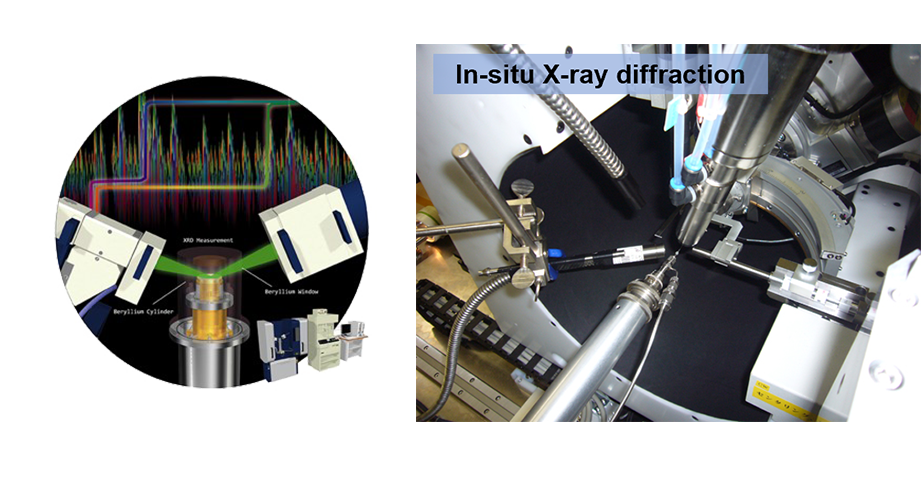
Topic 5: Exploring new functions of MOF crystal assemblies.
Typically, the functions of MOFs are understood based on the correlation between crystal structure and physical properties, and the development of MOFs is also based on their crystal structures. However, MOF crystalline particles have finite sizes, and it is becoming recognized that their size and shape are also related to their physical properties. Especially when MOFs are turned into devices for practical applications, the interactions between MOF crystalline particles are expected to be important. We are developing methods to arrange MOF crystalline particles in various configurations, and exploring new functions based on MOF particle arrangement and assembly.
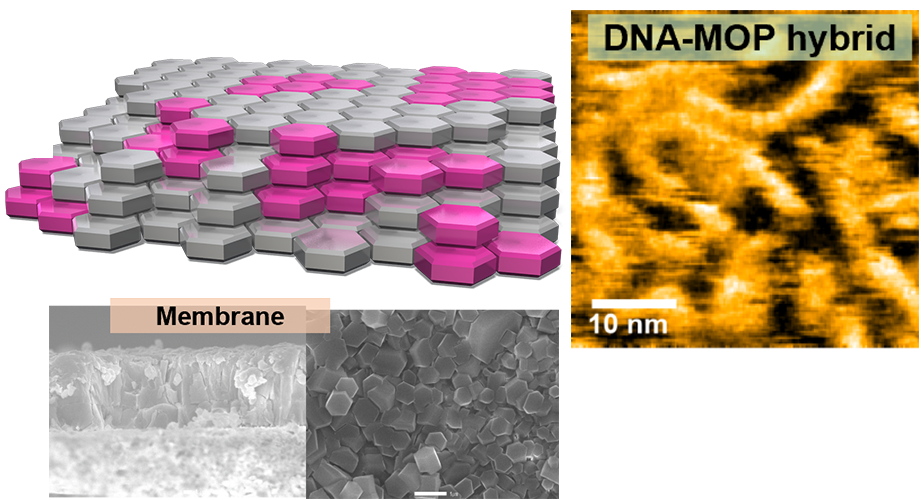
Topic 6: Exploring energy conversion functions based on heat of adsorption.
Some MOFs are known to show flexible transformation of their structures upon adsorption. When the structure changes, the energy of the structure also changes. Therefore, the observed energy change includes both “the energy of the molecular adsorption itself” and “the energy of the structural transformation,” making molecular adsorption to flexible MOFs a special type of adsorption where these two factors are correlated. Focusing on this uniqueness, we are conducting research aimed at developing flexible MOFs with less heat generation. Additionally, since the energy from adsorption can be extracted as thermal energy, we are also conducting research on energy conversion using MOFs.
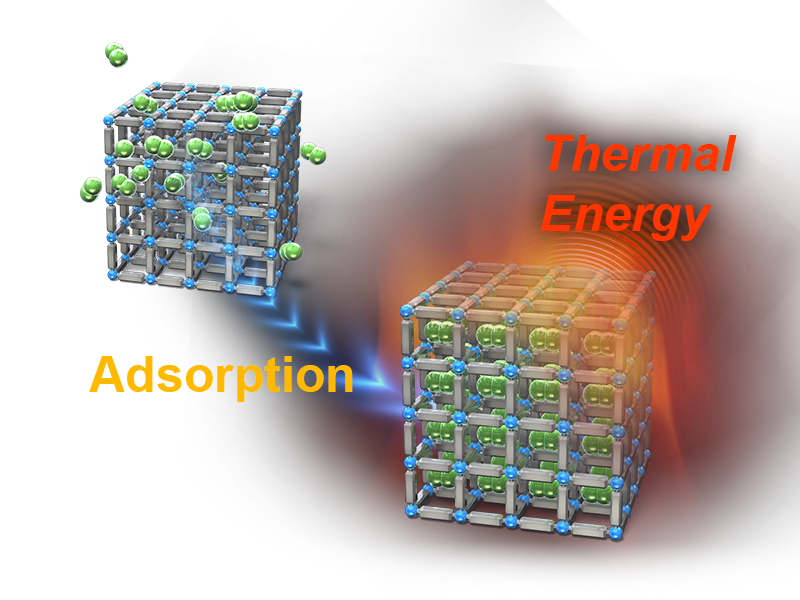
pagetop